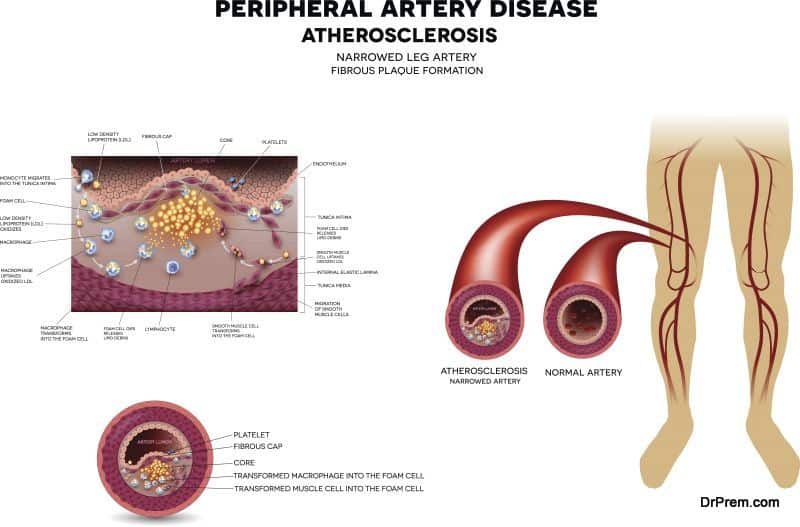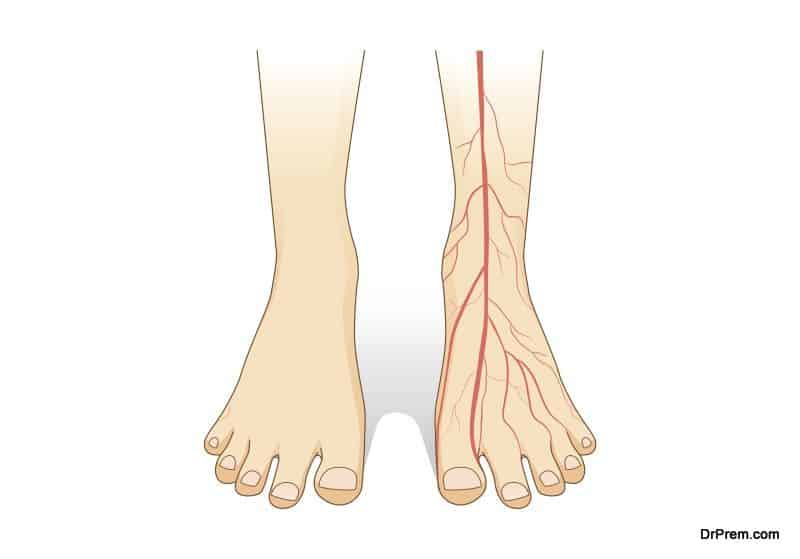Peripheral arterial disease (PAD) results from accumulation of cholesterol and plaque clogging the arteries running down your legs and feet. This disorder might not only cause you a kind of malaise in your feet and legs but can also have a serious restrictive impact on your gait and leg movements.
PAD can take your life:
Severe health hazards may follow resulting in loss of your leg or it might take your life as well. It is a condition quite akin to coronary artery disease (CAD) whereby the cholesterol and plaque buildup block the arteries in your cardiovascular region leading to a heart attack.
In all practical cases, CAD and PAD can lead to a disease called atherosclerosis where a cholesterol blockage can seriously interfere with the flow of blood throughout your body along the arterial route.
The consequences are at times inevitable culminating into a coronary arrest or stroke. It is prudent and equally important to keep these alarming conditions at bay by getting a screening for your feet pulse beat and you would be able to see clearly the dubious connection between CAD and PAD.
Understanding the indications:
The initial syndromes that can lead you to PAD are painful legs. Your legs get a wave of fatigue easily and you find walking long distances have turned extremely difficult for you. Other indications may be:
- Painful cramps in the leg muscles specially the calf muscles ache most
- A feeling of weakness and numbness in legs
- Coldness in your feet
- Delayed healing of sores in feet and legs
- Very weak pulse or no pulse felt in the feet or legs.
PAD may be spread across your entire body:
It is not that only your feet and legs are affected by atherosclerosis. This is a general disease which can affect any and every part of your body.
However, there is a test where your physician can examine the pulse of your feet just as he reads the pulse of your wrist.
Who should go for screening?
- People aged above 70
- Habitual smokers
- Middle aged overweight and obese people
- Diabetics and hypertensive people
Getting the pulse beat of your feet checked:
Examining the pulse beat in your feet could be a simple test carried out while you are having a routine health check. Each foot should have two pulses that can be easily located by your physician conversant with the methodology of the test. The test brings out a significant health revelation whether your feet is deprived of an adequate supply of blood flow.
In this screening process, the step that follows next is the measurement of ankle brachial index. It is a method where blood pressure cuffs are applied on your arms and legs together with a Doppler ultrasound probe.
It will enable your doctor to hear and count the pulse beat in your feet which is a sufficient indication whether your feet are being fed by enough blood supply. For a healthy patient, the blood pressure in the arms and the foot should be the same. A fall in 10 % blood pressure can be an early warning signal that you are heading for a peripheral arterial disease.
Generic screening can bring out pseudo positives:
There are organizations that offer comprehensive screening at medical test camps encompassing conditions from osteoporosis to coronary disorders. But the tests revealed at these mass health checkups could often be misleading.
These tests can lead to unanticipated conditions including false positive results putting you at the peril of undergoing unnecessary surgical procedures, which could have been otherwise avoided without running any risk of health issues. In the absence of PAD symptoms, testing is not required.
PAD must not make you run in panic as the tests are not compulsory for all. The following people may not have to undergo a PAD assessment:
- If there is no family history of coronary disorders.
- If the candidate is young and well below 60 years of age.
- If the candidate is not a habitual smoker.
Risks with PAD screening:
Rampant screening for PAD may make the candidate vulnerable to other types of health issues that might need major surgeries and medication as a solution for after affects of a screening. Only after a final and thorough discussion with the physician it might be necessary.
Make lifestyle changes- Stay safe:
If there is even a slight indication of reduced flow of blood to your legs and feet, lifestyle changes are imperative.
- Quit smoking and drinking.
- Grow a habit of consuming a lot of fruits and vegetables.
- Maintain an active lifestyle as you age making physical exercises an essential part for your daily life.







